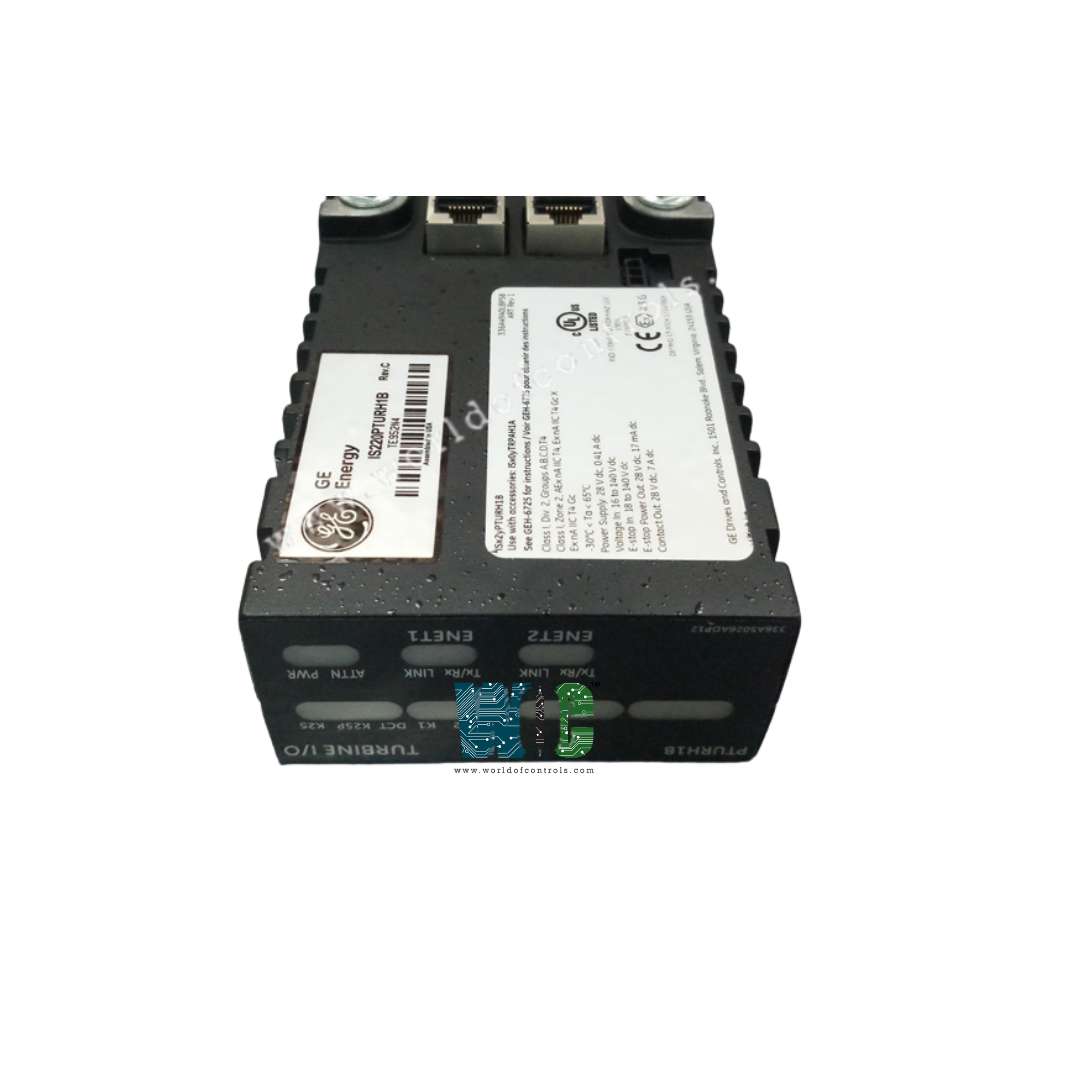
World Of Controls understands the criticality of your requirement and works towards reducing the lead time as much as possible.
IS220PTURH1B, REV C - Primary Turbine Protection I/O Module is available in stock which ships the same day.
IS220PTURH1B, REV C - Primary Turbine Protection I/O Module comes in UNUSED as well as REBUILT condition.
To avail our best deals for IS220PTURH1B, REV C - Primary Turbine Protection I/O Module, contact us and we will get back to you within 24 hours.
SPECIFICATIONS:
Part Number: IS220PTURH1B, REV C
Manufacturer: General Electric
Series: Mark VIe
Product Type: Primary Turbine Protection I/O Module
Number of channels: 8
Number of PT Inputs: 2
Number of Breakers Supported: 2
Input Voltage Range: 70 – 120 V
Analog Outputs: 0-20 mA, up to 900 Ohms
Slip Range Supported: ±3 Hz max
Operating Temperature Range: -40°C to +70°C
Accuracy: ±0.5%
Size: 8.26 cm high x 4.19 cm wide x 12.1 cm
Availability: In Stock
Country of Origin: USA
Manual: GEH-6721D
FUNCTIONAL DESCRIPTION:
IS220PTURH1B, REV C is a Primary Turbine Protection I/O Module manufactured and designed by General Electric as part of the Mark VIe Series used in Distributed Turbine Control Systems. The PTUR pack provides the electrical interface between one or two I/O Ethernet networks and a turbine control terminal board. The pack contains a processor board common to all Mark VIeTM distributed I/O packs, a board specific to the turbine control function, and an analog acquisition daughterboard. The pack plugs into the TTURH1C terminal board and handles four speed sensor inputs, bus and generator voltage inputs, shaft voltage and current signals, eight flame sensors, and outputs to the main breaker.
Input to the pack is through dual RJ45 Ethernet connectors and a three-pin power input. Output is through a DC-62 pin connector that connects directly with the associated terminal board connector. Visual diagnostics are provided through indicator LEDs, and local diagnostic serial communications are through an infrared port. As an alternative to TTURH1C, three PTUR packs may be plugged directly into a TRPAH1A terminal board. This arrangement handles four speed inputs per PTUR, or alternately, fans the first four inputs into all three PTURs. Two solid-state primary trip relays are provided by TRPA. This arrangement does not support bus and generator voltage inputs, shaft voltage or current signals, flame sensors, or main breaker output.
COMPATIBILITY:
PTURH1A is compatible with the Turbine Terminal Board TTURH1C, and the STUR board, but not the DIN rail-mounted DTUR or other TTUR boards. The following table gives details of the compatibility:
INSTALLATION:
INSTALLATION:
The processor board connects to an acquisition board tailored to the I/O pack’s function. When input power is applied, the soft-start circuit gradually increases the voltage to the processor board. Local power supplies are activated in sequence, and the processor reset is released. The processor then performs self-tests and loads application code from flash memory, specific to the I/O pack type. This code verifies the compatibility of the processor with the acquisition and terminal boards using board ID information. If the components are correctly matched, the processor initiates Ethernet communication by requesting a network address via DHCP, using a unique identifier from the terminal board. Once Ethernet is initialized, the processor configures the on-board logic, launches the application, and enables the acquisition board to start operation. The processor board in the pack is common to all Mark VIe Ethernet I/O packs. It contains the following:
AUTOMATIC SYNCHRONIZATION CONTROL IN PTUR (K25):
The PTUR executes the auto-sync algorithm, which monitors two Potential Transformer (PT) inputs—generator and bus—to calculate phase angle and slip. When enabled by the application code and the system predicts top center alignment, the algorithm attempts breaker closure by energizing relay K25. Using the zero-voltage crossing method, it determines phase, slip, and acceleration. The algorithm compensates for breaker closure delay, which is configurable and optionally self-adaptive within defined limits. It operates using interrupts and requires a generator voltage to function.
WOC has the largest stock of OEM Replacement Parts for GE Distributed Control Systems. We can also repair your faulty boards and supply unused and rebuilt boards backed up with a warranty. Our team of experts is available around the clock to support your OEM needs. Our team of experts at WOC is happy to assist you with any of your automation requirements. For pricing and availability on parts and repairs, kindly contact our team by phone or email.
What is the input voltage range for the PTUR?
The PTUR module accepts input voltages from 70 V to 120 V RMS. This voltage is typically sourced from the Potential Transformers (PTs) used in the generator and bus systems. These PTs provide the necessary voltage inputs for the module to measure the generator and bus voltage conditions and perform the synchronization process.
What is the phase angle measurement accuracy?
The PTUR uses a zero-crossing detection technique to measure the phase angle with an accuracy of ±1. This high accuracy is crucial for precise synchronization, ensuring that the generator and the grid are in phase before closing the breaker. This prevents damaging mechanical stresses on both the generator and the grid system.
What types of I/O signals does it support?
Primary Turbine Protection I/O Modules are capable of handling multiple types of input and output signals. These typically include discrete (digital) inputs and outputs used for simple on/off status monitoring and control, 4-20 mA analog inputs used to monitor continuous sensor outputs such as pressure or temperature, and pulse or frequency signals from speed sensors to track turbine rotation accurately.